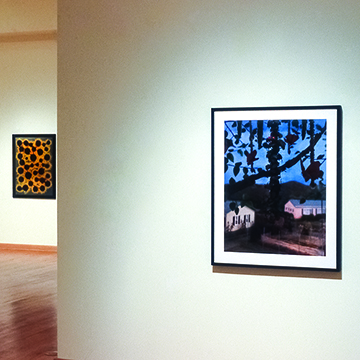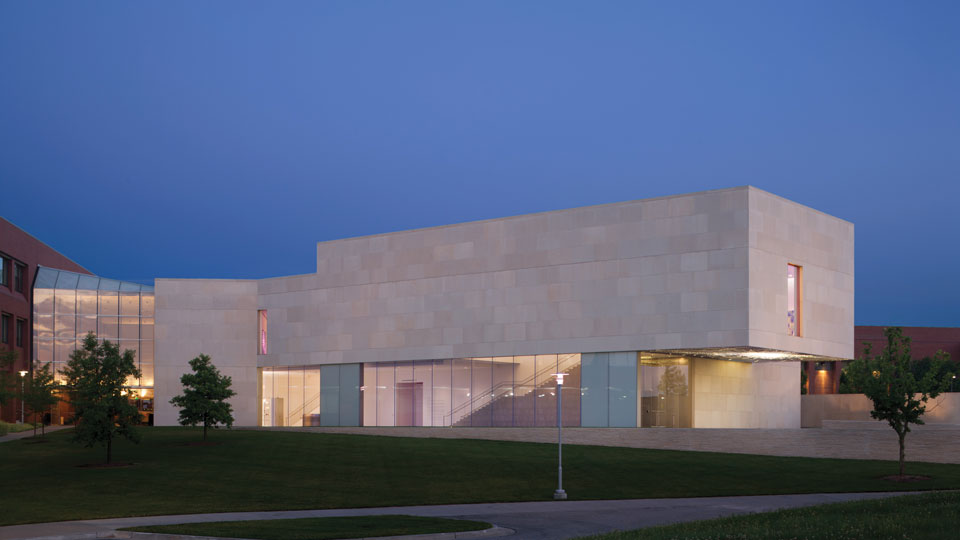Nature Studies
Gregory Crewdson • Adam Fuss • Hiroshi Sugimoto
The mystery of nature, how we perceive it and how it is transformed through those perceptions, is addressed in the works by artists Gregory Crewdson, Adam Fuss and Hiroshi Sugimoto. Nature Studies explores the various ways in which natural occurrences may be interpreted and manipulated through the art of photography.
Crewdson’s vibrantly colored photographs are inspired by the American suburban lifestyle, a mythologized world of manicured lawns and quiet surroundings where inhabitants live in a supposedly sterile environment. And it is here, through Crewdson’s fictitious dioramas which he builds in his Brooklyn studio, that the chaos of nature remains active. Crewdson places insects, birds and small mammalian creatures in anthropomorphized positions, creating a curious plan between the strange activity of the natural world versus the quiet existence of the suburban backdrop. It is as if the inhabitants of the small pastel homes are immune to the destruction and magic of their own backyards. “Among the growth and decay of flower beds, there is an enduring beauty, terror, and fertility that cannot be suppressed. It is here, in this underworld, a world alive with insects, larvae, and butterflies, that the suburban garden becomes a forest of secrets and a place of wonder,” said Crewdson.
The characters of Crewdson’s choreographed scenes possess an otherworldliness often recognized in the typical natural history museum diorama; that is, the animals seem a little too well-behaved and posed to be pulsating with life, yet their animated actions contrast with the static positioning to create an intriguing tension.
In a similar vein, the work of Sugimoto explores the natural history museum diorama with an eye keen to its perplexing purposes. Photographing from the inside of the display case, Sugimoto photographs the animals as if they are wild within the landscape. Only upon closer inspection does the viewer notice the “too perfect” discrepancies: the painted background or the uniform stance of the animals as they engage the camera lens with their direct gaze. And suddenly, as with Crewdson, the photograph takes on a new dimension taunting the viewer into opposing reactions: is this a clever preservation of nature, or an elaborate tomb for the deceased animals?
By tricking the viewer into believing he has visited exotic lands, Sugimoto alludes to our culture’s fascination with the artificial – where nature is preferred at a safe distance and, perhaps, the wilderness surrounding our everyday lives (such as Crewdson’s suburbia) is best ignored in order to keep our sense of security intact.
Fuss brings the viewer closer to nature through his method of photography that has eliminated the need for a camera. He has also at times reversed the subject, from the external natural world to the internal biological aspects that elude our visual senses. Laying various natural objects, such as decaying flowers or a snake swimming through water, directly onto the cibachrome paper, Fuss allows the oils and heat from the subject to chemically react to the paper before he exposes it to light. The result is a unique photogram of magnificent color fields that remain as documents to the length of time and type of organism that had previously rested on the cibachrome.
Fuss’ photogram technique is the result of an accident. While taking a pinhole photograph, light accidentally leaked in from a corner of the box and produced a graduated color field dotted by the elongated shadows of dust particles that had been floating around the interior of the makeshift camera. Said Fuss, “light played across the film...When I processed it, I saw this world, this other world of image that I was unaware of. And that showed me that I didn’t need the camera anymore.”
Crewdson will present a lecture in Carlsen Center 211 in conjunction with the opening reception. The gallery guide includes an essay by Michael Darling, independent critic and curator, Santa Barbara, California.
Gregory Crewdson was born in 1962 in Brooklyn and received an MFA from the Yale School of Art in 1988. Since 1993 he has taught at Yale University, New Haven, Connecticut.
British artist Adam Fuss was born in London in 1961 and has lived and worked in New York since 1982. He trained as a commercial photographer prior to his art career, and he has exhibited his work internationally.
Japanese artist Hiroshi Sugimoto was born in 1948 in Tokyo, and he studied at the Art Center in California in the 1970s. He lives and works in New York and Tokyo.





